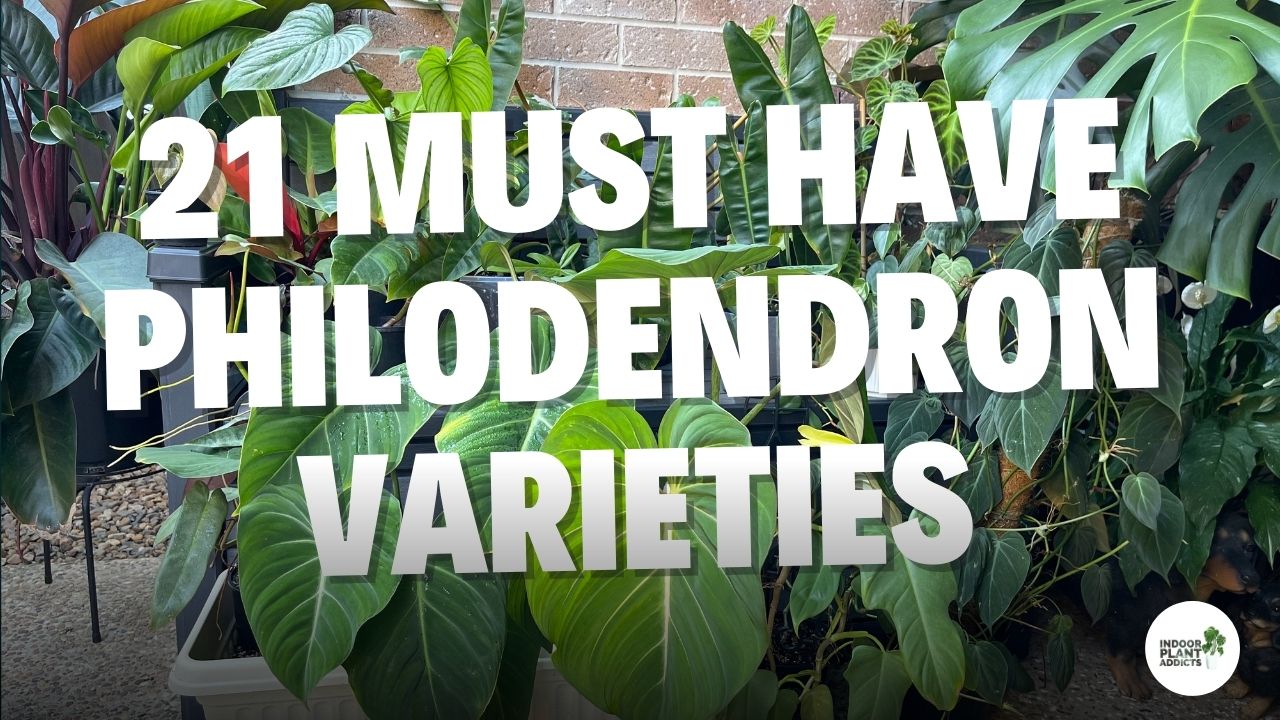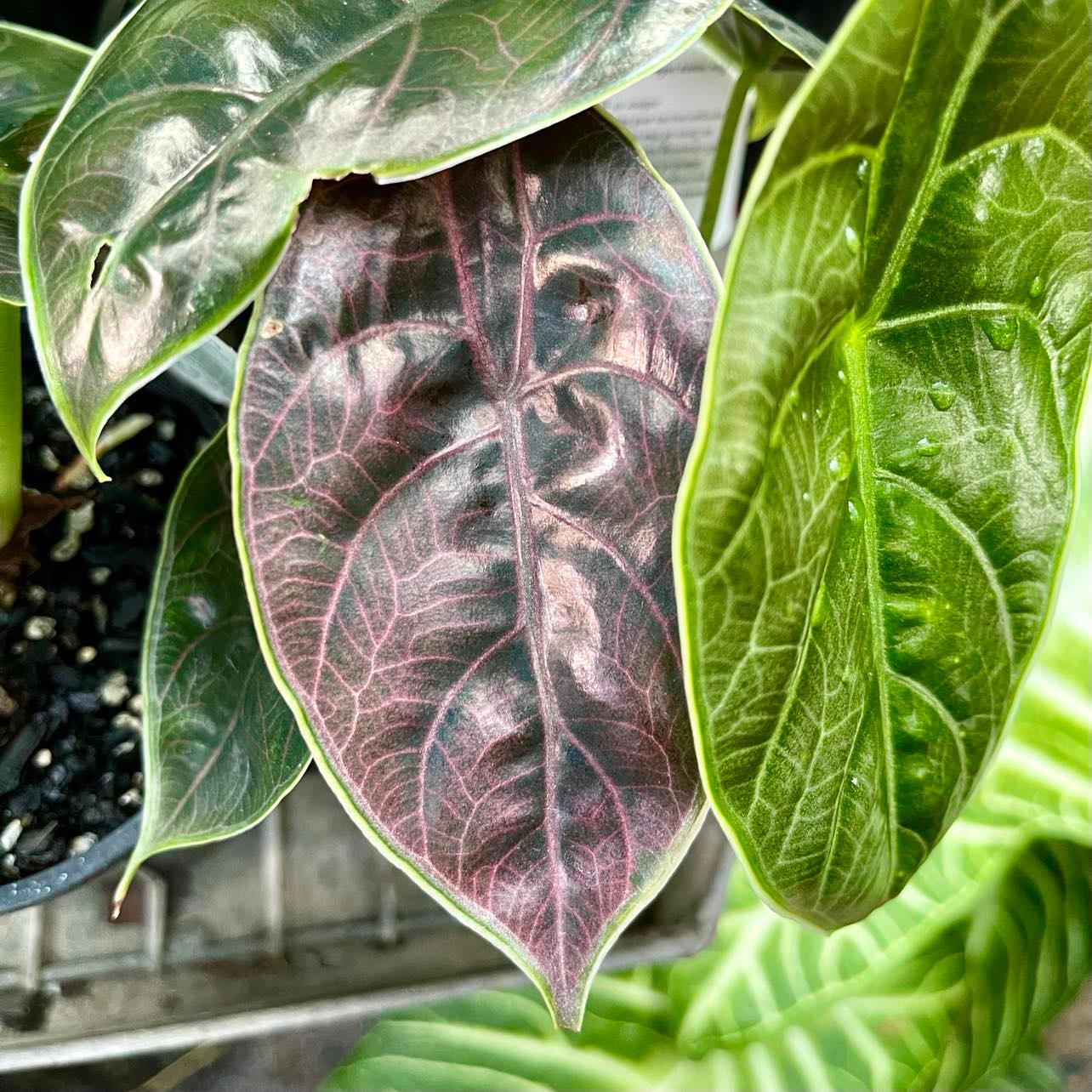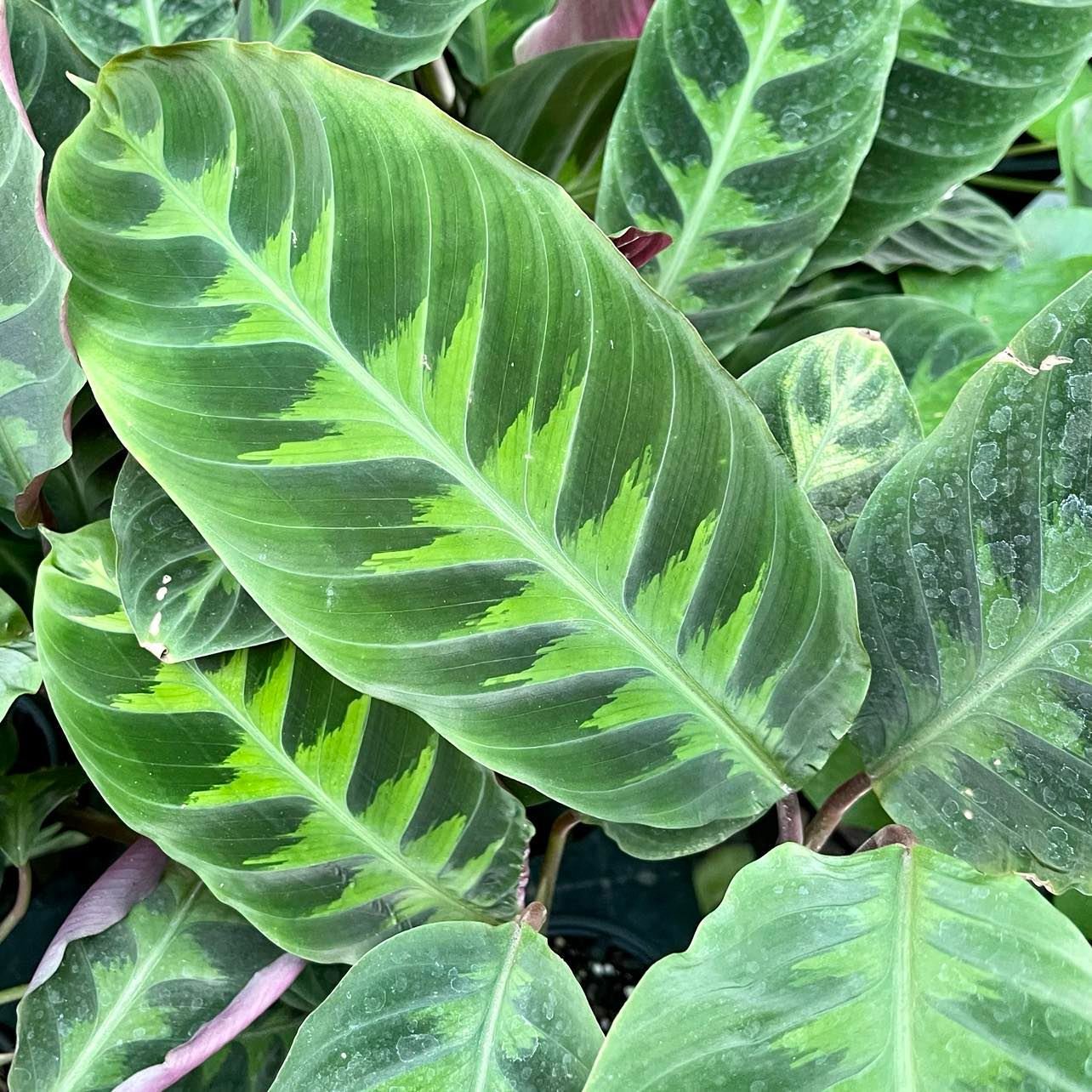Alocasia wentii, also known as the Wentii Alocasia or Hardy Elephant Ear, is a stunning indoor plant that can elevate the aesthetics of your home. This guide will provide you with an in-depth understanding of its care requirements, helping you create the ideal environment for this plant to thrive. We will cover the plant’s identification, size, light requirements, temperature, humidity, watering, fertilizing, soil, diseases, pests, toxicity, and common problems.

Alocasia Wentii Quick Overview
| Attribute | Details |
| Scientific Name | Alocasia wentii |
| Common Names | Wentii Alocasia, Hardy Elephant Ear |
| Plant Type | Perennial, Evergreen |
| Native Region | New Guinea |
| Mature Size | 2-4 feet in height |
| Light Requirements | Bright, indirect light |
| Temperature | 60-85°F (15-29°C) |
| Humidity | Moderate to high humidity (above 60%) |
| Watering | Regular, allow soil to partially dry |
| Fertilizing | Balanced liquid fertilizer, every 4-6 weeks during growing season |
| Soil | Well-draining, loose, and rich in organic matter |
| Toxicity | Toxic to humans and pets |
Identifying Alocasia Wentii
The Alocasia wentii is characterized by its large, arrowhead-shaped leaves with deep green color and striking, silvery-blue veins. The undersides of the leaves often exhibit a contrasting purple hue. The plant’s unique appearance can help distinguish it from other Alocasia varieties such as Alocasia Polly or Alocasia Amazonica, which have more intricate, wavy-edged leaves.
Size
Alocasia wentii is a relatively compact plant compared to other Alocasia species, typically growing 2 to 4 feet in height. The bold leaves can reach up to 12 inches in length and 6 inches in width, making it a visually captivating addition to any indoor space. The plant exhibits an upright growth pattern, with leaves branching out from the central stem.
As an indoor plant, the Alocasia wentii may grow at a slower pace than its outdoor counterparts. However, with proper care and ideal conditions, it can still achieve a remarkable size that adds character to your living space.
Light Requirements
Alocasia wentii thrives in bright, indirect light. Direct sunlight can scorch the plant’s delicate leaves, causing damage and discoloration. Ideal locations for the Wentii Alocasia in your home include an east- or west-facing window with filtered light or a few feet away from a south-facing window.
If you notice your plant’s leaves growing towards the light source, be sure to rotate the pot regularly for even growth and exposure. In lower light conditions, the plant may become leggy and produce smaller leaves.
You can add a blind or curtain to a room window if it receives direct sunlight to help defuse the light and avoid burning your plants. Alternatively, you can use grow lights. The same as direct sunlight, if the plant is placed too close to the light, they can burn the foliage. A distance of at least 60cm should be kept between the plants and light.
Temperature Requirements
The Wentii Alocasia prefers temperatures between 60-85°F (15-29°C) and does not tolerate cold drafts or sudden temperature fluctuations. To maintain a consistent temperature, avoid placing the plant near air vents, open windows, or exterior doors.
During winter months, it’s essential to provide additional warmth, as lower temperatures can cause the plant to enter dormancy or even die.
Humidity Requirements
Alocasia wentii thrives in moderate to high (above 60%) humidity environments. To maintain the desired humidity levels, you can place a tray filled with pebbles and water under the plant, use a humidifier, or group your Wentii Alocasia with other humidity-loving plants. Keeping plants in an adequate humidity environment will help encourage larger and healthier growth.
Signs of inadequate humidity include browning leaf tips, yellowing leaves, or curling leaves. On the other hand, excessively high humidity can lead to fungal infections and pest infestations.
Watering Requirements
The Alocasia wentii prefers consistent moisture, but it’s crucial to avoid overwatering. Water the plant when the top inch or two of soil feels dry to the touch. Be sure to use well-draining soil and a pot with drainage holes to prevent root rot. In winter, reduce the watering frequency, as the plant enters a period of dormancy and requires less water.
Yellowing leaves can be a sign of overwatering, underwatering or poor drainage. Drooping leaves can also be a sign of overwatering.
Overwatering your plants is a big issue that everyone should be cautious of. Excess water to the soil can cause it to become waterlogged and soggy. This can lead to root-rot, fungus issues and pest problems. Rotted roots can’t take in any nutrients or water for the plant and if left untreated, can cause plant death.
Fertilizing Requirements
Fertilize your Alocasia wentii with a balanced liquid fertilizer diluted to half strength every 4-6 weeks during the growing season (spring and summer). Fertilizing can be cut back during the cooler months when growth slows or plant enters dormancy.
Signs of under-fertilizing include slow growth, pale leaves or weak stems. On the other hand, symptoms of over-fertilizing include browning leaf tips, yellowing leaves, and wilting.
A slow-release fertilizer can also be used instead of a liquid if preferred. If using a slow release fertilizer, it can be added to the soil every 2 months or as per packet instructions.
When it comes to fertilizing your plants, you need to be cautious of over-fertilizing. If you think you may have over-fertilised your plant, you can rinse the soil with water or repot into new fresh soil.
Soil Requirements
Alocasia wentii thrives in well-draining, loose soil rich in organic matter. A mixture of equal parts potting mix, peat, and perlite is ideal for maintaining proper aeration and moisture retention. You can also add some bark or coconut coir to enhance the soil structure and promote healthy root growth.
Oxygen and aeration is important in potting soil because it’s what helps the plants roots to breathe. When there isn’t enough oxygen, the plants roots can begin to rot. You can add other things such as charcoal, mulch or bark to the soil to help with aeration.
You also need to be cautious that the soil is holding onto enough moisture to keep the roots hydrated, but not too much that it’s causing the soil to stay soggy wet and waterlogged. Soggy and waterlogged soil can cause root-rot, fungus issues, pest problems and in some cases, plant death. See our article The Best Potting Soil for Houseplants for more information on potting soils.
Regularly check the soil’s pH, as the Wentii Alocasia prefers slightly acidic soil with a pH of 5.5-6.5. Amend the soil with sulfur or peat moss to lower the pH, or add dolomite lime to raise it if necessary.
Diseases & Pests
Alocasia wentii is susceptible to a few common diseases and pests:
- Root rot: Overwatering can lead to root rot, which is caused by fungal infections. Ensure proper drainage and avoid overwatering to prevent this issue.
- Spider mites: These tiny pests can cause leaf damage by sucking plant juices. Increase humidity and use insecticidal soap or neem oil to control infestations.
- Mealybugs: These pests feed on plant sap, causing stunted growth and leaf yellowing. Remove them manually or treat with insecticidal soap or neem oil.
- Aphids: These small insects can cause distorted leaves and transmit plant viruses. Use insecticidal soap, neem oil, or a strong water spray to remove them.
When it comes to caring for houseplants, the best thing you can do is to try and avoid pest problems from beginning. There are some things you can do to try and avoid any pest infestations and these are:
- Isolate new plants to prevent bringing unwanted pests into your home.
- Check all plants and new plants for any signs of pests.
- Prune off dead and dying foliage.
- Wipe down leaves when they start getting dusty or dirty.
- Try and keep happy and healthy plants. Healthy plants are better at deterring and fighting off pest infestations than plants that are already struggling.
- Isolate any pest infested plants.
Following this and keeping your plants in the correct living conditions will give them the best shot at avoiding unwanted pests and diseases.
Toxicity
Alocasia wentii contains calcium oxalate crystals, which can cause irritation and swelling in the mouth, throat, and gastrointestinal tract if ingested. This plant is toxic to humans and pets, so it’s essential to keep it out of reach of children and animals.
If the plant is accidentally ingested, contact a healthcare professional or a veterinarian immediately for proper care and treatment.
Common Problems
Alocasia wentii may experience several common problems:
- Yellowing leaves: Overwatering, underwatering, or poor drainage can cause leaf yellowing. Adjust your watering schedule and ensure proper soil drainage.
- Browning leaf tips: Low humidity or over-fertilizing can cause browning leaf tips. Increase humidity and monitor your fertilizing schedule.
- Drooping leaves: Insufficient light or overwatering can lead to drooping leaves. Move the plant to a brighter location or adjust your watering habits.
- Leggy growth: Inadequate light can result in leggy growth with smaller leaves. Relocate your Alocasia wentii to a spot with brighter, indirect light.
By following this comprehensive care guide, you can ensure your Alocasia wentii remains healthy and vibrant, adding a touch of tropical beauty to your indoor space.




